When a Buddhist monk visited an isolated part of the Iwate coast 350 years ago, he saw it much as it remains today, a peaceful inlet formed by towering volcanic white rocks, contrasting beautifully with the blue ocean waters and green pine groves crowning the larger of these stone islands. He was so moved that he named it Jodogahama (Pureland Beach) after the Buddhist paradise.

Today, Jodogahama is a popular area for tourists and locals to walk along the coast enjoying the stunning rock formations. During summer, the pebble beach is packed with families swimming in the protected bay. Some spend the night in Miyako just to see the sun rise over the ocean from there. What most people don’t know is that it’s possible to go sea kayaking right here along this breathtaking coastline in the middle of the Sanriku National Park.
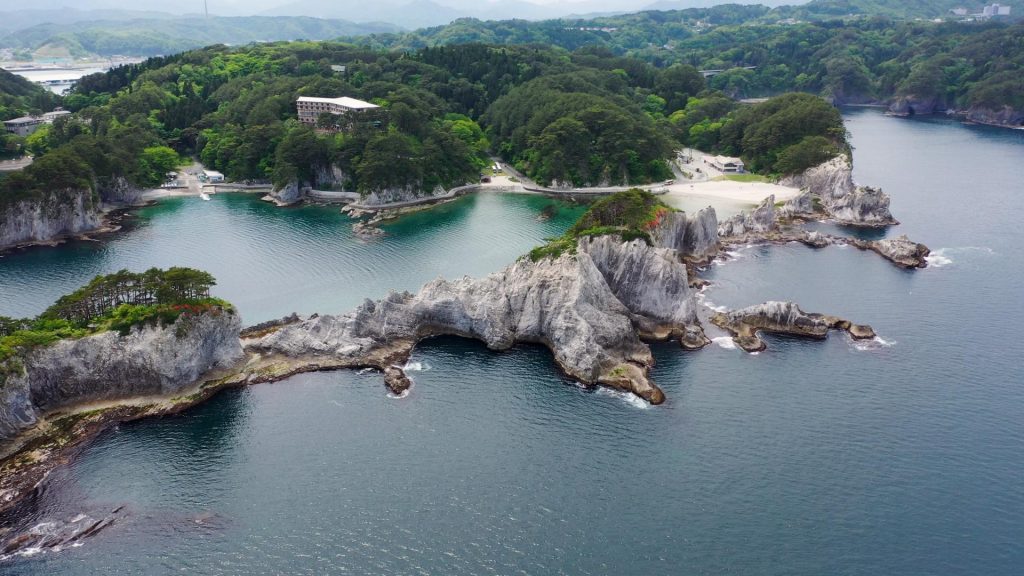
I’ve been living in Iwate for more than ten years, and have visited Jodogahama at least a dozen times. It wasn’t until 2020 when I first saw a small group of kayakers set out from the Jodogahama Bay and strike north along the coast. There was no loudspeaker announcing their departure (like there are for all the normal tourist boats), no signs advertising the service— I almost wondered if it was a private club rather than a guided tour. Last summer this mystery was solved when I was introduced to the man that operates these adventure tours.
Kazumasa Suzuki is a registered guide at the Sanriku Geopark that has been leading groups on sea kayaking adventures for more than twenty years. He’s also a kayaking instructor, which is fortunate given my lack of experience. (I’m from the Midwest of the United States, and grew up canoeing in lakes, which is totally different from sea kayaking.)
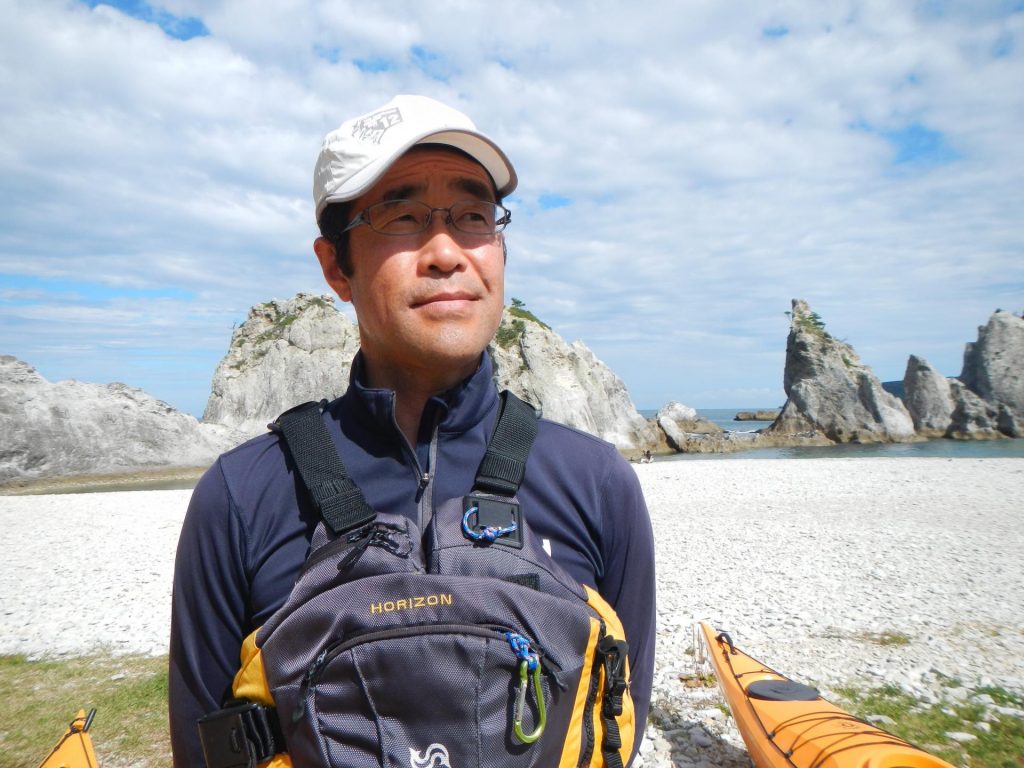
After some basic instruction on how to sit properly in the kayak, and the basics of using the double-sided paddle, we set out. Just to the north of Jodogahama lies Takonohama, or literally “octopus bay,” named for the numerous little caves and tunnels that octopuses are said to favor. This bay is also mostly protected from ocean waves, so I was able to get a good sense of how to maneuver the kayak before having to deal with any turbulence from the ocean.
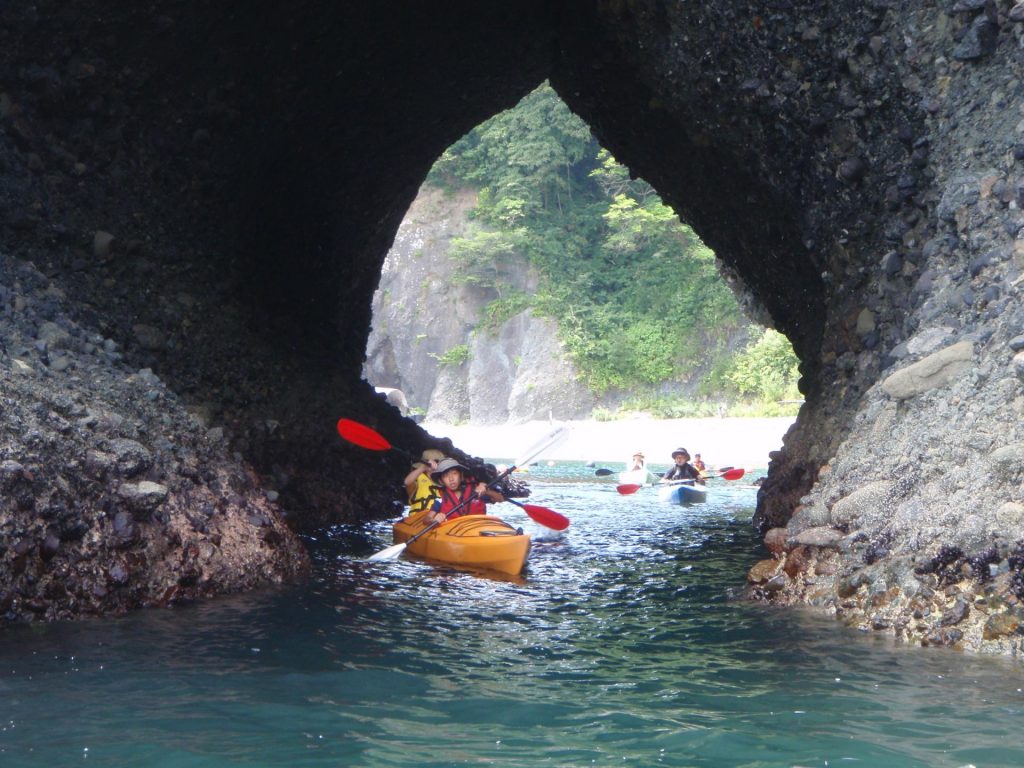
The Takonohama Route is what Suzuki calls “intermediate” difficulty, and I quickly found out why when he led me through a narrow tunnel in the kayak. While it definitely wasn’t dangerous, it was already feeling like an adventure as I did my best to avoid hurting myself on the jagged tunnel walls while taking in the beauty of this natural cave. It wasn’t long before I got used to navigating these narrow waterways, though. We must have explored four or five caves—I lost count. Some had small areas of rock deep within that we could pull our kayaks upon and disembark, exploring a bit of the cavern on foot before returning the same way. Others connected back to the bay.
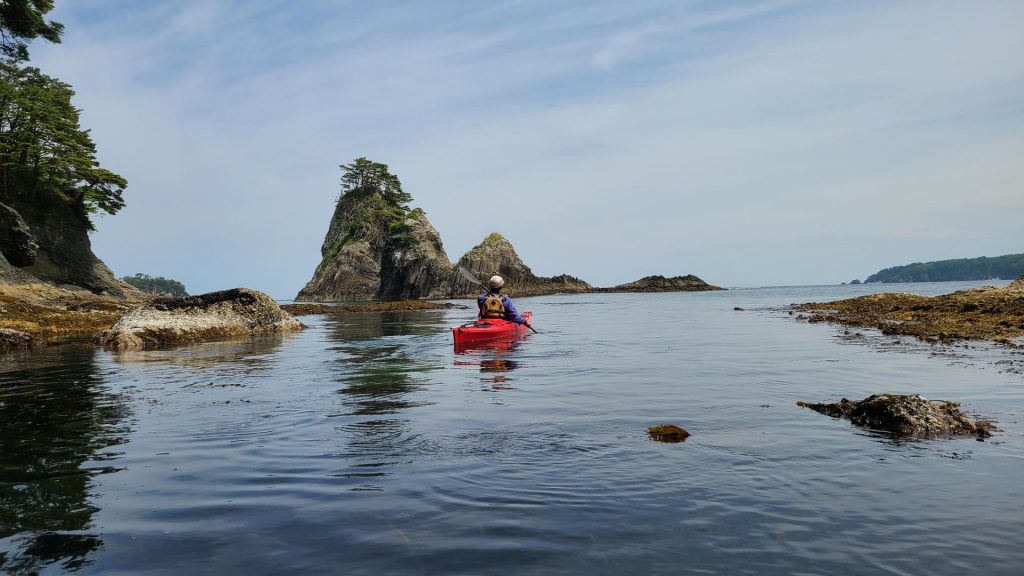
Our destination was Candle Rock—a protrusion of stone on a cliff face that inspired its name. In reaching this area, north of Takonohama, we crossed an area open to waves from the ocean, which might have been scary on a windier day. It was a beautiful morning though, and the waves weren’t much of a challenge. In fact, they gave me just the right amount of practice in maneuvering through ocean swells so that next time I might have the confidence to try something a bit more turbulent. Suzuki told me that we had been very lucky with the weather, as generally the ocean is a bit rougher than what we experienced. As someone new to ocean kayaking, I was grateful for this.
Though it felt like I’d spent all day along this picturesque stretch of coast, the entire round trip journey only took a little over an hour. (With a larger group it normally takes an hour and a half.) Apparently all those canoe trips I took during my childhood paid off, and I was able to get the hang of paddling a sea kayak in no time and keep up a good pace. There are a number of different routes along the coast that he guides, so I will definitely go again to explore further the caves and cliffs along the Sanriku Coast.
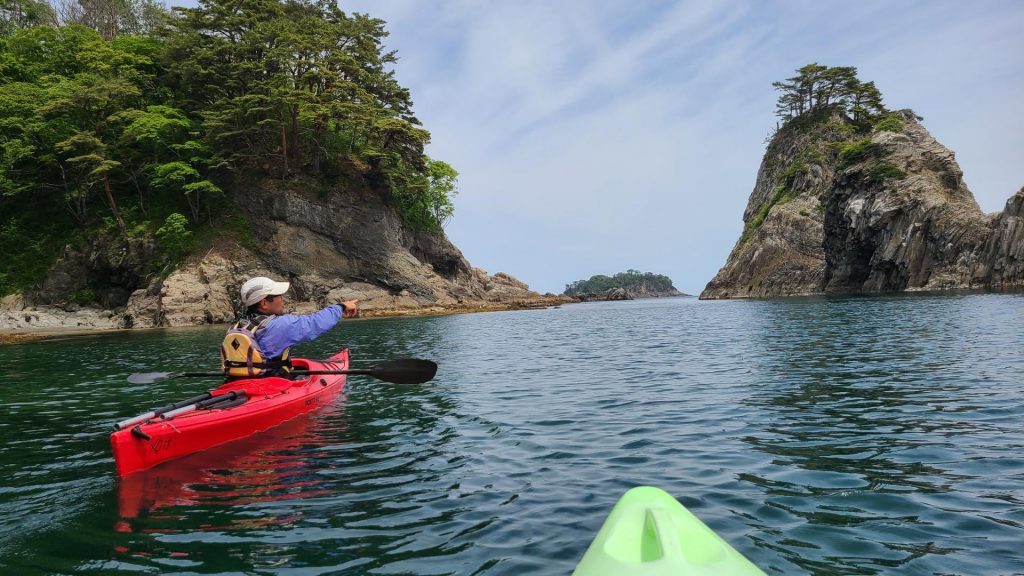
Kazumasa Suzuki operates the Sanriku Sea Kayak School Season in Miyako. He offers a family-friendly sea kayaking experience right in the Jodogahama Beach area that is very safe and appropriate for families with younger children. (Children as young as five-years-old can safely participate.) The standard tours are 90 minutes (¥5,500 per adult or ¥4,000 for junior high school students and younger), and a more adventurous two-hour tour for ¥6,500 per adult. These are prices for groups of three to 20 people. Tours operate from March through November, and prices may be slightly higher during the peak season in August. Kayaks, paddles and life preservers are included, but you’ll need to bring a few things like UV protection (hat, sunglasses, lotion, etc.), and crocs or some kind of footwear that can get wet. Details of what to bring are listed on his website and more photos are available on his Instagram account.
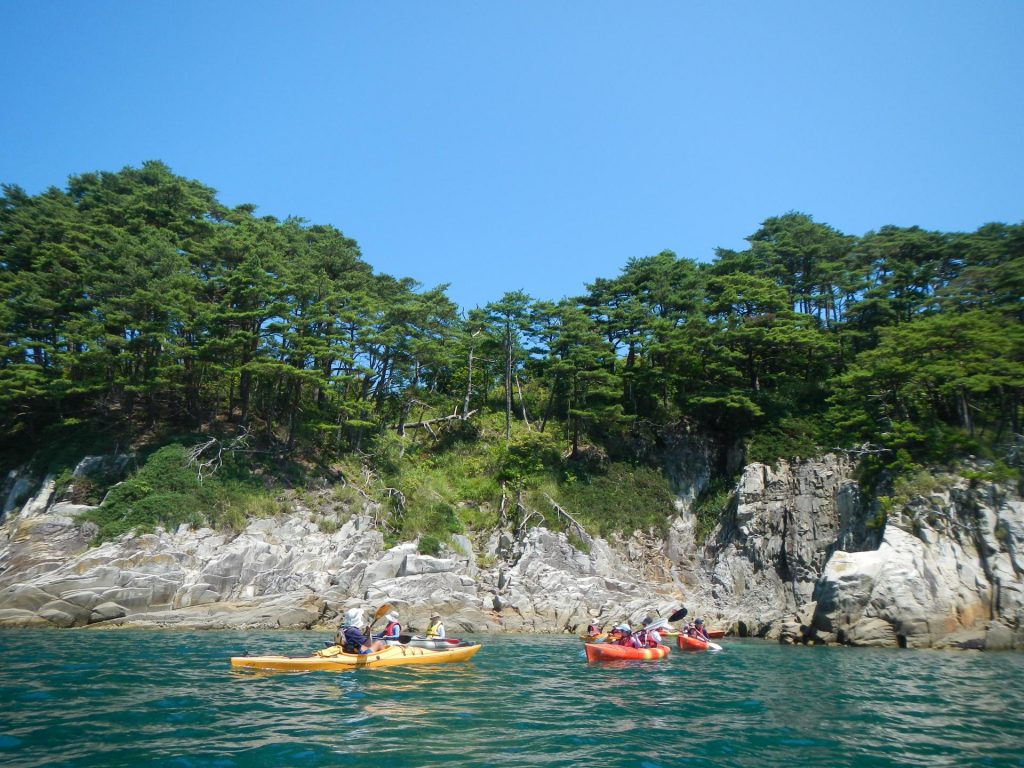
Note: Suzuki does not speak English, so please have one Japanese-speaking member of your group to facilitate communication. For larger groups, a local interpreter may be provided to help. Learn more at Season Sea Kayak School here.
The post Sea Kayaking Iwate’s Pureland Paradise appeared first on Outdoor Japan.

